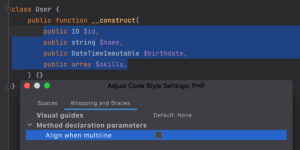内容目录
摘要:在现代的网络应用中,与服务器进行数据交互是常见任务。Python的requests库为开发者提供了便捷的HTTP请求和响应处理功能。本文将深入介绍如何安装requests库,并通过简单易懂的示例演示如何在Python项目中使用该库来发送HTTP请求、处理响应以及处理常见的网络交互情景。
![图片[1]-简明扼要:掌握Python中requests库的安装和使用-连界优站](http://www.6x66.cn/wp-content/uploads/2023/08/image-171.png)
1. 引言
随着互联网的普及,几乎每个应用都需要与服务器进行通信。Python的requests库是一个流行的选择,它提供了简单而强大的方式来进行HTTP请求和处理响应。
2. 安装requests库
安装requests库非常简单,只需在命令行中运行以下命令:
pip install requests确保你的Python环境中已经安装了pip,它是Python的包管理工具。
3. 发送GET请求
发送GET请求是与服务器交互的基本操作之一。下面是一个发送GET请求并处理响应的示例:
import requests
url = 'https://jsonplaceholder.typicode.com/posts/1'
response = requests.get(url)
if response.status_code == 200:
data = response.json()
print("Title:", data['title'])
print("Body:", data['body'])
else:
print("Request failed with status code:", response.status_code)4. 发送POST请求
有时候,我们需要向服务器发送数据以创建资源或执行其他操作。下面是一个发送POST请求的示例:
import requests
url = 'https://jsonplaceholder.typicode.com/posts'
data = {
'title': 'New Post',
'body': 'This is the body of the new post.',
'userId': 1
}
response = requests.post(url, json=data)
if response.status_code == 201:
new_post = response.json()
print("New post ID:", new_post['id'])
else:
print("Request failed with status code:", response.status_code)5. 处理异常
在实际开发中,网络请求可能会遇到各种问题。requests库提供了异常处理机制,帮助我们更好地处理错误情况:
import requests
try:
response = requests.get('https://nonexistent-website.com')
response.raise_for_status() # 如果请求失败,会抛出异常
except requests.exceptions.RequestException as e:
print("Request failed:", e)6. 设置请求头和参数
有时候,需要在请求中包含自定义的头部信息或查询参数。这可以通过headers和params参数来实现:
import requests
headers = {'User-Agent': 'MyApp'}
params = {'q': 'python'}
response = requests.get('https://www.google.com/search', headers=headers, params=params)
print(response.url) # 打印实际请求的URL7. 总结
本文简要介绍了如何安装和使用Python的requests库。通过使用这个库,你可以轻松地发送HTTP请求、处理响应以及处理各种网络情境。无论是获取数据还是与服务器交互,requests库都为你提供了强大的工具。希望这篇文章能够帮助你快速上手使用requests库,为你的Python项目添加网络交互的能力。



























